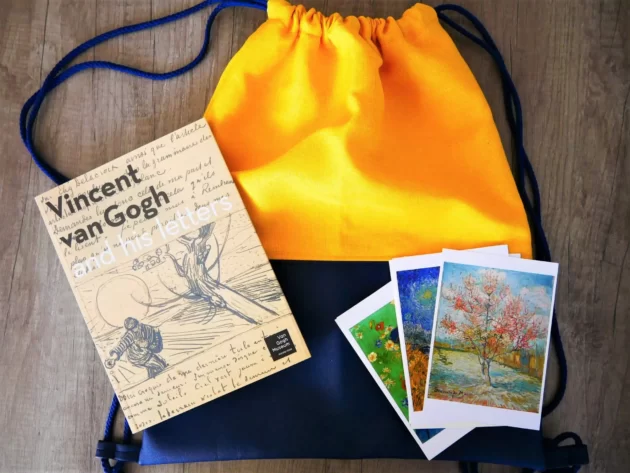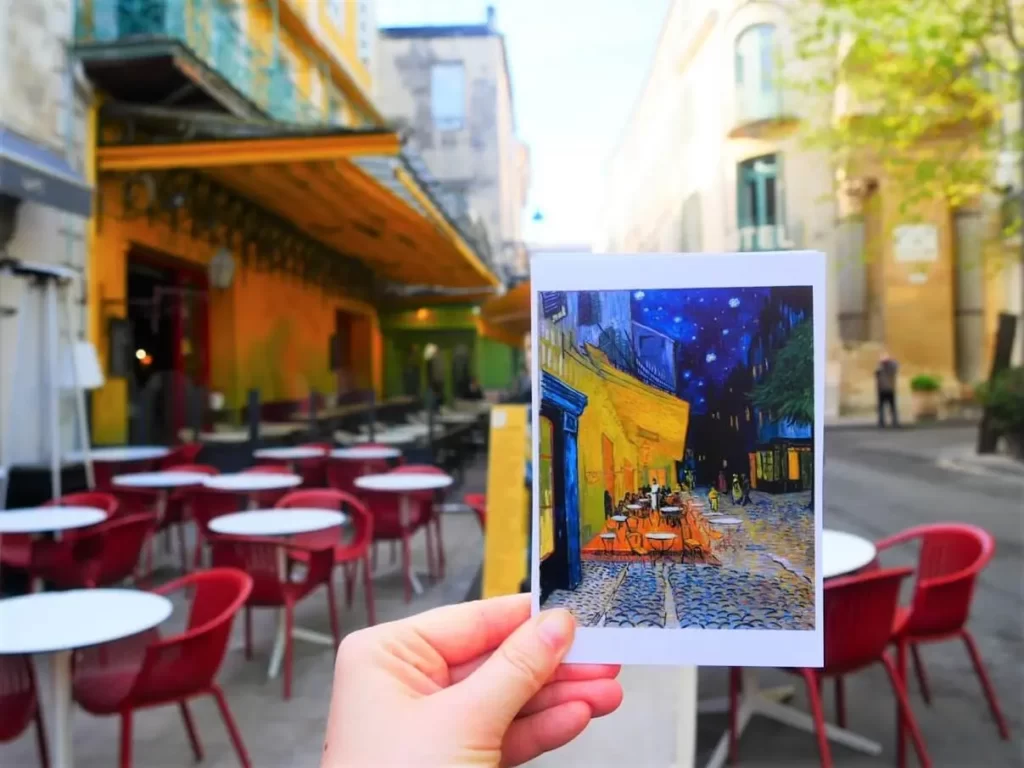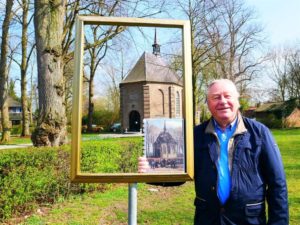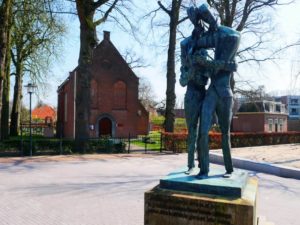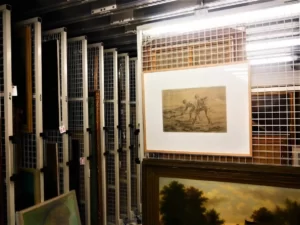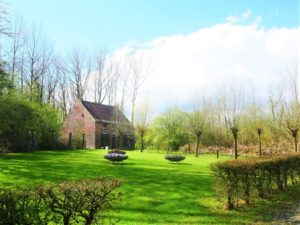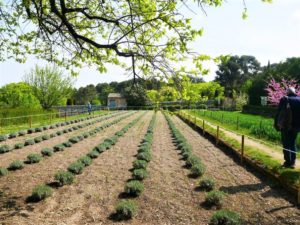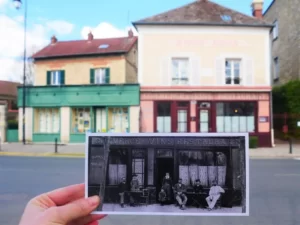Places linked to Vincent van Gogh post was first published on April 19th 2019.
Vincent van Gogh is one of the most famous painters in the world. During his ten-years-long career, he made around 1,800 artworks. However, he wasn’t only an artist. He lived in four different countries and was one of the first modern travellers back in the 1880s.
After working as a museum guide at the Van Gogh Museum in Amsterdam for three years, I knew his paintings exhibited there by heart. But, I started to feel the wanderlust for visiting those places depicted on Van Gogh’s paintings, as well. So, in spring 2019, I set on a train in Amsterdam, and during the next two weeks visited and explored locations linked to Van Gogh in the Netherlands, Belgium and France.
Places linked to Vincent van Gogh in Europe
My journey to discover locations on which Van Gogh lived and worked was organised in collaboration with Van Gogh Route. It’s a partnering project founded by organisations somehow linked to life and work of Van Gogh.
It was a dream-come-true trip for me and something I wanted to do for such a long time. I was all excited about visiting locations I knew so well from his paintings. But, actually being there, and learning about him from the local experts was something that has overcame my expectations. Van Gogh’s art and life story is so inspiring and unique. And it’s really amazing how well you can feel him in any of those locations.
Vincent van Gogh
Vincent van Gogh lived during the second half of the 19th century. He had many professions and painted only during the last ten years of his life. He started relatively late, when he was 27, and died only ten years later. But, during that short decade, Van Gogh created around 1,800 paintings and drawings.
He also travelled a lot during his life. Before he started to work as a painter, Van Gogh worked in the Netherlands, England, France and Belgium. Once he began to paint, Vincent moved a lot, as well. Very often, those locations he was at, affected the subjects, colours and style on his paintings.
He was documenting his travels and the painting development in numerous letters he wrote to his brother Theo, other family members and friends. Many of them could still be seen at the Van Gogh Museum in Amsterdam, which has around six hundred of his letters.
You can also read them in some of the books with his letters published. Those letters and his descriptions of the places he was visiting were also quite inspirational for my trip.
My Van Gogh trip in numbers
Exploring places linked to Vincent van Gogh, where he painted some of his famous paintings, took quite some time. It was a big trip and represented in numbers only, it looks like this:
- Between 2,500 and 3,000 kilometres (1550 and 1865 miles)
- 13 days
- 3 countries
- 13 cities
- 9 museums
- 1 painter
- 1,800 artworks created in ten years of his career
How to find locations of Van Gogh’s paintings
During my trip, I visited places linked to Vincent van Gogh’s paintings in the Netherlands, Belgium and France. I didn’t go to England, but you can read about those places on a link here.
My idea was to travel as Vincent did back in the 19th century – by train. And it was so interesting to see the scenery changing so quickly, while the train progressed to the south.
After doing some research, I’ve realised the best thing would be to get myself an Interrail Pass that was valid for 15 days. I could easily catch whichever train I wanted and travel without having to deal with tickets. I also downloaded Interrail App and could check train departures and other info very quickly that way.
⤷ TIP: I had to make some reservations, though. When checking your trains, you can see for which ones you need a reservation. And you can make it at the Interrail website, so it’s straightforward to do that. I only had to make a reservation for four train rides, out of some twenty I’ve taken in total.
How much time do you need to visit places linked to Van Gogh
My trip lasted for thirteen days. And that was just enough time to visit all of those places linked to life and work of Vincent van Gogh. I visited the Van Gogh Museum in Amsterdam and Kröller-Müller in Otterlo in a week prior to my trip.
If you’d like to include them, too (and you definitely should), I would add two extra days for that. So, in total, fifteen days would be perfect to see all the places related to Van Gogh’s life and work.
Here is the schedule I followed:
- Day x – Amsterdam: Van Gogh Museum – the Netherlands
- Day x – Otterlo: Kröller-Müller Museum – the Netherlands
- Day 1 – Brabant: Zundert and Etten-Leur – the Netherlands
- Day 2 – Brabant: ‘s-Hertogenbosch (Het Noordbrabants Museum) and Nuenen – the Netherlands
- Day 3 – Antwerp – Belgium
- Day 4 – Mons and Borinage – Belgium
- Day 5 – Mons and Borinage – Belgium
- Day 6 – Auvers-sur-Oise – France
- Day 7 – Auvers-sur-Oise – France
- Day 8 – Paris – France
- Day 9 – Arles – France
- Day 10 – Arles – France
- Day 11 – Saint-Rémy-de-Provence – France
- Day 12 – Saint-Rémy-de-Provence – France
- Day 13 – Arles – Amsterdam (trip back home)
My journey to locations linked to Van Gogh’s life
Van Gogh was a true traveller and an expat of his time. He was travelling in the 1870s and 1880s when the trains just started to be used more regularly as transportation means in Europe. He was quite well educated and was fluent in Dutch, French and English.
Van Gogh in the Netherlands and Belgium
Van Gogh was born in Zundert and has spent his childhood at the very south of the country, in the region called Brabant. When he was 16 years old, he started to work as an art dealer. First in Den Haag, and later on in London and Paris. This is where he was first introduced to the world of fine arts.
A few years later, Van Gogh decided he wants to change his career, so he moved back to London. He started to work as an assistant teacher there. When that didn’t work for him either, Vincent decided to study religion in Amsterdam and become a pastor like his father. After failing the entrance exam at the Amsterdam University, he went to Borinage region in Belgium, to be a preacher among the coal miners.
⤷ Read more: Van Gogh in the Netherlands
Although he already created some drawings while in Borinage, Van Gogh started his career as an artist in 1880. He was 27 years old and focused on the painting during the next ten years until he died in 1890. He travelled a lot as a painter, and his style changed tremendously during that time, too.
Between 1880 and 1885, Van Gogh lived in the Netherlands. His paintings were quite dark, with peasants as his main subject. His ‘ The Potato Eaters’ is probably the most famous painting from that time.
After painting for five years, he realised that to improve his art, he needs some proper art education. That’s why at the end of 1885 Van Gogh went to Antwerp. He spent two months at the Art Academy there. And that was the only formal art education he’s ever got.
⤷ Read more: Van Gogh in Belgium
Van Gogh in France
However, since the education at the academy was rather formal, Vincent disliked it and soon left Antwerp. In spring of 1886, he moved to the art capital of the world – Paris.
The next two years he spent in the French capital were his real art school. Van Gogh’s brother Theo was an art dealer in Paris, and he introduced Vincent to many artists living there during that time. He was learning from Impressionists and Post-Impressionist, and two years later left Paris as a modern painter.
⤷ Read more: Van Gogh in Paris
Vincent loved and collected Japanese prints he was buying in Paris at Pere Tanguy’s shop. So, in early spring of 1888, he left to the south of France, to Arles, in search for ‘his Japan’.
He was utterly amazed by the colours and motives he has found there. And his art is definitely coming to its peak in Arles. Some of the most famous paintings like ‘The Sunflowers’, ‘The Yellow House’ or ‘Starry Night over the Rhone’ were all painted during that time.
⤷ Read more: Van Gogh in Arles
However, this is also where some of the first signs of his mental illness started to appear. And that’s why in May 1889 he went to the Saint-Paul hospital at a near-by Saint-Rémy-de-Provence.
Vincent painted numerous paintings while there. Especially in a garden of the hospital or in the nature of a near-by Alpilles Mountains.
⤷ Read more: Van Gogh in Saint-Rémy-de-Provence
After a year Van Gogh spent there, he went to the north once again – to Auvers-sur-Oise. That’s a village located some 30 kilometres north of Paris and it was one of my favourite places linked to Vincent van Gogh on this trip. He spent the last two months of his life there. And that’s a place where he died and is buried today.
⤷ Read more: Van Gogh in Auvers-sur-Oise
Why follow the footsteps of Vincent van Gogh
All of those places, people he met there, but also the scenery he saw in them, influenced his art strongly. I could see so well his colours, light, and even the brush strokes in nature. Anyone who loves his art and would like to understand it better should definitely visit some of the places where Van Gogh painted some of his very famous paintings.
There are also many museums, cultural centres and institutions, that are still researching his work. You can learn so much more about him in them, as well. There are guided visits organised, tours around those places, and even the painting workshops during which you can learn more about Vincent’s art.
Following the footsteps of Van Gogh was one of the most inspiring experiences and trips I’ve ever done. I learned much more about Vincent and his way of seeing the world around him. It was so amazing to stand at the very spot where he painted some of his famous paintings. Or to be in places where Van Gogh lived and worked.
Would you like to learn more about Van Gogh’s artworks and places linked to his life and art in the Netherlands, Belgium and France? Check out Culture Tourist Art Webinar: Meet Vincent van Gogh! Click on the picture below to read more and book.
This trip to places linked to Van Gogh was organised in collaboration with Route Van Gogh and their partners. Many thanks to all of them, lovely guides, hotel owners and other people I’ve met during my trip, who helped me organise it.

